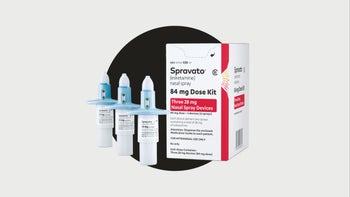
How to Recognize Signs of Sexual Abuse in Adults and Children
Key takeaways:
Signs of sexual abuse differ between adults and children. But, in general, sudden changes in behavior, withdrawing from friends and activities, and becoming fearful and anxious can all be signs of abuse.
Warning signs specific to children include becoming more attached to a primary caregiver, being afraid of and avoiding specific people, and frequently talking about sex.
If you or someone you know has experienced sexual abuse, there are resources that can help, such as the National Sexual Assault Hotline: 1-800-656-HOPE (4673).

It can be hard to wrap your head around the possibility that someone you know is being sexually abused. But sexual abuse affects people of all ages and backgrounds.
If you suspect that someone is in danger because of abuse, you can begin by looking for common signs of sexual abuse. While signs alone don’t guarantee that someone is being abused, they can be a first step to reporting your concerns or finding help.
What is sexual abuse?
Sexual abuse is a broad term that refers to sexual violence. It is most often used to describe a type of abuse against a minor, but may also refer to abuse of adults.
Search and compare options
Child sexual abuse includes any scenario in which an adult uses a child for sexual gratification. Well-known forms of child sexual abuse include physical contact and touching. However, sexual abuse could also involve an adult:
Watching a child for sexual reasons
Exposing themselves to a child
Showing a child sexual materials
But, as mentioned, adults can also be victims of sexual abuse. You may hear terms such as sexual assault, rape, or sexual violence used more often when referring to adult sexual abuse. Sexual assault is when someone forces or pressures sexual behavior on another person.
Sexual assault or abuse can happen to anyone. And abuse happens at the hands of acquaintances, strangers, and people that victims are close to.
Signs of sexual abuse in adults
Adults of all ages can be the targets of sexual abuse. But the signs of abuse sometimes differ depending on the age group and population.
Signs of sexual abuse in young adults
College students, including young women, may be at particular risk for sexual assault and abuse. Warning signs of sexual abuse in college-aged adults may include:
Depression symptoms, such as sadness, withdrawal, and loss of interest in previously enjoyed activities
Self-harm behaviors
Thoughts of suicide
Decreased self-esteem
Increased anxiety
Drop in grades
Drug and alcohol misuse
Covering more or less of their bodies than was previously typical
Avoiding specific situations, places, or people
Injuries in genital, anal, or other intimate body areas
Read more like this
Explore these related articles, suggested for readers like you.
Signs of sexual abuse in older adults
Older adults and people with disabilities are also vulnerable to sexual abuse. And, in some cases, their abusers are the people they rely on for support, making it difficult to ask for help.
The following may be signs of sexual abuse in older adults:
Bruising in private areas, such as the breasts or genitals
Vaginal or anal bleeding with an unknown cause
Seeming fearful or withdrawn, particularly around a certain person
Unexplained blood on clothes or bedding
Signs of sexual abuse in a romantic relationship
Sexual violence may be part of a wide pattern of abuse, particularly in an intimate relationship. An abuser may force or pressure sex upon a partner as a way to keep control.
In these cases, it may be difficult to detect signs of sexual abuse. But you can look for overall warning signs of an abusive relationship, including:
Withdrawal from friends and activities
Worry about a partner getting angry
Dismissal of a partner’s concerning behavior
Extreme jealousy
Changes in behavior and personality
Signs of sexual abuse in children
Many children and teens experience sexual abuse, as well. And children of any gender can be abused.
Warning signs of sexual abuse may show up differently in children. In general, children are more vulnerable than adults and may not know how to describe or report abuse. They may not even understand abuse is happening.
However, certain signs — especially sudden changes in behavior — can point to something being wrong. Here are some warning signs of sexual abuse in young children:
Excessive discussion of sexual topics or knowledge about sex
Talking less than usual overall
Wanting to stay near a primary caregiver, while avoiding specific people
Not wanting to change or take clothes off
Changes in habits and behaviors, such as not eating
Frequent physical complaints, such as stomach aches
Less interest in school, friends, or hobbies
Frequently being afraid or having nightmares
Self-harm behaviors or thoughts
Wearing more or less clothing than before
The warning signs of sexual abuse in teens are similar to those of children. But teens may also experience:
Misuse of drugs and alcohol
Significant changes in weight
Decrease in self-hygiene practices, such as showering
Bruises or STIs
It’s common to believe a child’s abuser must be a stranger. However, the opposite is often true. More than 90% of sexual abusers know the child they abuse; nearly 60% are acquaintances and almost 35% are family members.
Resources and support for victims of sexual abuse
There are many support options available to help both adults and children who have experienced sexual abuse. Here are some resources to consider:
National Sexual Assault Hotline: The National Sexual Assault Hotline is operated by the Rape, Abuse, & Incest National Network (RAINN). Hotline representatives provide resources on sexual assault and abuse and can help you find ongoing support. Connect with them 24/7 at 1-800-656-HOPE (4673).
National Domestic Violence Hotline: If you’re experiencing abuse from a partner or family member, you can contact the National Domestic Violence Hotline, which is available 24/7. Call 1-800-799-SAFE (7233) or text “Start” to 88788. Representatives will connect you to local support systems that can help you get to a safe place or access ongoing resources.
988 Suicide and Crisis Lifeline: Representatives with the 988 Suicide and Crisis Lifeline can help you with an immediate mental health concern or recommend local treatment options. Just call 988 or visit the lifeline online.
State child abuse hotlines: Each state and region has its own process for following up on child abuse reports. But many regions have a statewide hotline or website where you can report abuse. If you don’t know the number for your state’s hotline, find it by visiting the Child Welfare Information Gateway.
State adult protective services: If you suspect an older adult or adult with disabilities is being sexually abused, contact your state or county adult protective services. You can use the National Adult Protective Services Association’s get help tool to find agencies in your area.
The bottom line
It can be confusing and scary to suspect that someone you care about is being sexually abused. Signs of abuse to look out for include sudden changes in behavior, withdrawal, and new anxieties or fears about certain people. While these signs don’t necessarily mean someone is being abused, they are worth following up on.
If you are in need of support, contact your state or local authorities or call 1-800-656-HOPE (4673).
Why trust our experts?



References
Rape, Abuse & Incest National Network. (n.d.). Child sexual abuse.
Rape, Abuse & Incest National Network. (n.d.). Children and teens: Statistics.
Rape, Abuse & Incest National Network. (n.d.). Sexual abuse of people with disabilities.
Rape, Abuse & Incest National Network. (n.d.). Sexual assault.
Rape, Abuse & Incest National Network. (n.d.). Warning signs for college-age adults.
Rape, Abuse & Incest National Network. (n.d.). Warning signs for teens.
Rape, Abuse & Incest National Network. (n.d.). Warning signs for young children.
U.S. Department of Health and Human Services Office on Women’s Health. (2021). Am I being abused?
U.S. Department of Health and Human Services Office on Women’s Health. (2021). How to help a friend who is being abused.
U.S. Department of Justice. (n.d.). Red flags of elder abuse.
For additional resources or to connect with mental health services in your area, call SAMHSA’s National Helpline at 1-800-662-4357. For immediate assistance, call the National Suicide Prevention Lifeline at 988, or text HOME to 741-741 to reach the Crisis Text Line.





























